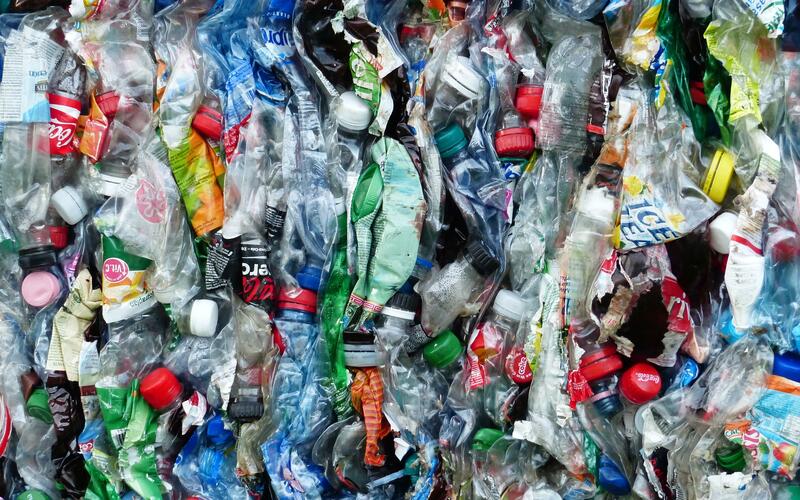China: A Leader in Plastic Recycling?

China: A Leader in Plastic Recycling?
The Chinese plastic industry is responsible for 25 percent of global plastic production. Despite the versatility and prevalence of plastics around the world, plastics have significant environmental drawbacks — a single plastic bottle produces three pounds of carbon dioxide and takes 450 years to decompose. How might China reduce these adverse environmental effects? One option the country is exploring is plastic waste recovery.
Liu, Zhe, Adams, Michelle, Raymond P. Cote, Qinghua Chen, Rui Wu, Zongguo Wen, Weili Liu, and Liang Dong. “How Does Circular Economy Respond to Greenhouse Gas Emissions Reduction: An Analysis of Chinese Plastic Recycling Industries.” Renewable and Sustainable Energy Reviews 91 (April 2018). https://doi.org/10.1016/j.rser.2018.04.038
China emits more greenhouse gas (GHG) emissions than any other country in the world. The country faces an enormous challenge of reducing GHG emissions by 40 - 45 percent by 2020 under the Paris Climate Agreement. Ten years ago, the Chinese government proposed the implementation of a circular economy — an economic system that emphasizes waste recovery and reduction through reuse of components and recycling of materials across industries. Circular economic policies address and decrease waste generation and accumulation and can drastically reduce a country’s GHG emissions.
A recent study published in Renewable and Sustainable Energy Reviews analyzes circular economy principles in the Chinese plastic recycling industry. Researchers from Fujian Normal University and Dalhousie University evaluated the driving forces behind GHG emissions reduction tactics used in the Chinese plastic recycling industries over a span of ten years.
This industry was specifically chosen by the researchers, given 1) the global presence of plastics in all corners of society, 2) the significant economic and environmental drawbacks linked to environmental pollution of single-use plastics (plastics used once and thrown out), 3) larger public concerns about pollution caused by post-consumer plastic waste, and 4) the increase in Chinese plastic consumption and waste generation over a span of eight years.
Through a scenario analysis of the characteristics and driving forces of GHG emissions by the Chinese plastics recycling industry between 2007 and 2016, the researchers reveal that the implementation of a circular plastics recycling economy is an effective GHG reduction strategy that has the potential to heavily reduce emissions, while decreasing pollution from post-consumer waste. Moreover, it can help divert plastic waste to recovery facilities that help offset the use of virgin materials in plastic production.
The study found that the primary driving forces of GHG emissions reduction by the plastic recycling industry between 2007 and 2016 were an increase in the use of recycled plastics in new product development, and an increase in recycling practices. Surprisingly, technological recycling advances did not have significant impacts on GHG emissions reduction during this time period.
Overall, the Chinese plastic recycling industry reduced GHG emissions by 7.67 million tons in 2007 and by14.57 million tons in 2016 (a 200 percent growth trend). If the industry simply continues with ‘business as usual’, the researchers estimate that it could reduce total GHG emissions by 35.12 million tons by 2030.To continue this trajectory and possibly exceed it, the researchers offer three policy recommendations for China. First, they recommend establishing a national database for material usage and energy consumption. Second, the country must improve the legislative and regulatory environment around recycling. Third, China needs to increase and implement advanced technology to optimize the use of higher quality recycling plastics — for example, by recovering landfilled plastics.
These policies could help China overcome the complexities and challenges that exist within the plastic recycling industry. Challenges include the recovery of different types of plastic waste (e.g., clean, single-type plastic items, dirty plastic items, mixed plastics), the contamination levels of such plastics with regards to collection, categorization, and diversion of plastic waste, and the uneven distribution of such recycling facilities around China.
Improper handling and poor supervision of waste in China, especially plastic waste, has led to major challenges with air pollution, e.g. heavy smog during the winter months. With the recent implementation of the National Sword policy* , the Chinese plastic recycling industry has the potential to become a leader in addressing waste accumulation and air pollution problems in China. Furthermore, the National Sword policy could position China as a credible and achievable example for affluent countries wavering on their GHG commitments, as well as for other industrializing countries struggling to address economic growth and environmental sustainability.
*The National Sword Policy is a 2017 Chinese policy aimed at reducing imports of recycled materials including plastics, paper, metal scrap.




